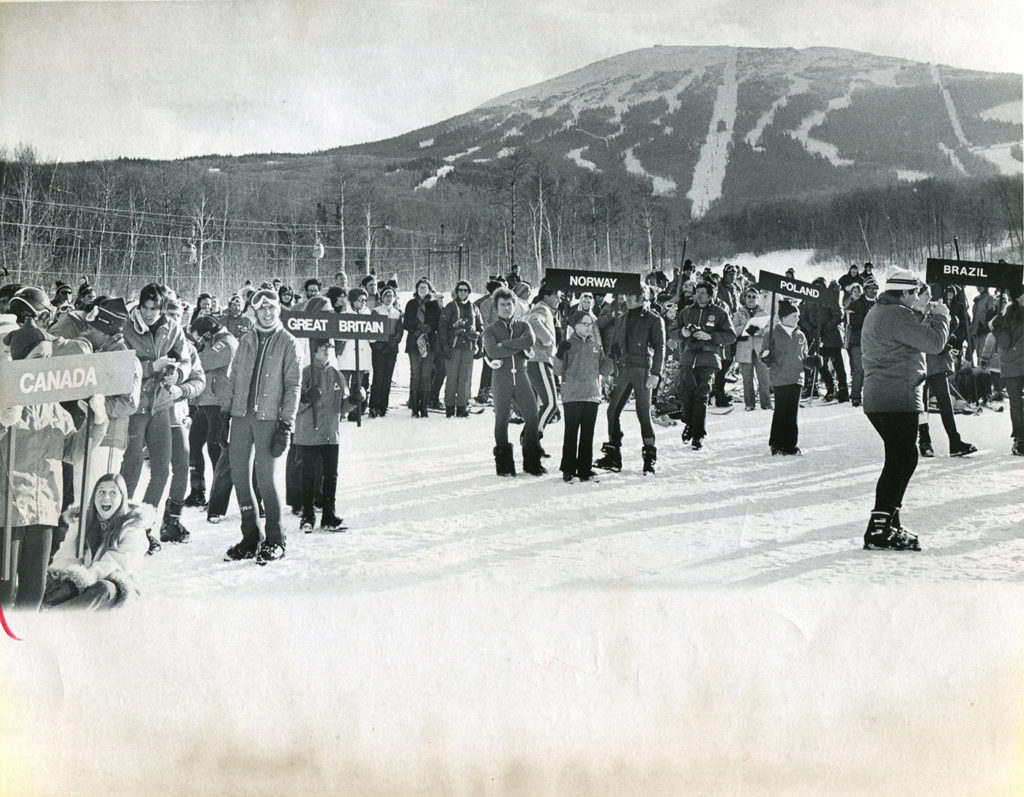When the World Came to Sugarloaf

When the World Came to Sugarloaf
Celebrating the 50th anniversary of the 1971 World Cup with an exhibition at the Maine Ski and Snowboard Museum in Kingfield
by Paul Koenig
Photography courtesy of the Maine Ski and Snowboard Museum
Issue: November 2020
All eyes were on Sugarloaf in February 1971. The ski mountain, which had opened just over two decades earlier, was hosting the World Cup, drawing the greatest skiers from across the globe to Carrabassett Valley. At the time, Bruce Miles was a student at the University of Maine at Farmington. He and his roommate signed on to volunteer at the event and ended up working as assistants to the head gatekeeper. Miles, now executive director of the Sugarloaf Ski Club, helped the Maine Ski and Snowboard Museum in Kingfield create an upcoming exhibition that commemorates the 50th anniversary of the World Cup. The museum will unveil the exhibition with a soft opening in December and host a virtual exhibition on its website.

How was it to see all of the international attention on Sugarloaf?
Being involved in ski races, it was exciting to me and exciting to other people who skied at Sugarloaf. You had all of these countries coming, plus you had all of the champion skiers at the time: Gustav Thöni and Bernhard Russi and Annemarie Moser-Pröll. They were all converging at Sugarloaf. It would be like if you were in a big football area and the Patriots came to town. These were the best skiers in the world.
What did the World Cup mean for Sugarloaf?
It got us a lot of press. Guys like Tony Chamberlain from the Boston Globe, Bob Beattie, Jim McKay from ABC’s Wide World of Sports, they came to Sugarloaf. It put us on an international stage, so Europeans knew about Sugarloaf, too. A lot of people in the ski world realized where Sugarloaf was. Sugarloaf was 21 years old at that time. It was a big deal. After the World Cup, we kept getting a lot of high-level races.
What was the most memorable part of it?
For me, it was just seeing the parade of athletes coming in and seeing all of these guys that I had been reading about. For the people who worked on the event, the most memorable part was just how much work it was, like when we got 16 inches of snow that fell in the middle of it and had to push it all away and get it down to ice so they could race. Some people may think the most memorable thing was the moose meat they had. For the banquet they had a surf and turf, Maine-style, with moose and lobster. And it was a roadkill moose they had gotten from the Maine Warden Service. Back in those days, if you hit a moose, you didn’t get to keep it. It was owned by the state. They got a phone call from the Warden Service, “Hey, we got a moose, and you can have it if you want.”

Learn more about the 1971 World Cup, including how the race came to Sugarloaf, how the courses were designed, and about the fire in the Swiss team trailer, at the Maine Ski and Snowboard Museum’s exhibition this winter or on the museum’s website. 256 Main St. Kingfield | 207.265.2023

